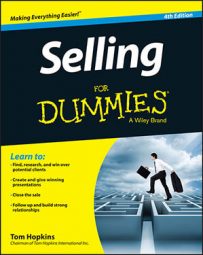When you first considered a career in sales, you probably had some vague notions of success in mind — mostly related to your income. Now it’s time to turn those notions into specific, vivid pictures of your soon‐to‐be reality.
The pictures will inspire you when you feel like packing it all in and running away to a deserted isle somewhere in the South Pacific to lie on the beach watching your toenails grow.
When you’re setting goals, give yourself the time and privacy you need in order to think about what would make you happy, what would motivate you to sell with the big boys and girls. Goal setting should be fun. Don’t make it so complicated that you end up setting no goals at all out of fear that the goals you set will be wrong.
So what if they are? Are the goals police going to come to your front door and ask to do an audit of your goals? Probably not. Goals are maps you create for your journey to success — and sometimes with growth and development maps change. Road maps include unfinished roads or roads that you need to detour around while improvement is underway. The road map you create for yourself is no different.
When you’re in the beginning stages of goal setting, keep the following rules in mind to help yourself form and stay committed to what’s important in your life:
The goal must be better than your best — but believable. Don’t set a goal that you don’t truly believe you can reach. The trick to setting goals is to make them high enough to push you to strong levels of performance, yet reasonable enough that you can envision reaching them. If you set goals you don’t think you can reach, you most likely won’t be willing to pay the price to reach for them when the going gets tough. Even worse, you’ll be setting yourself up for failure. Who would do that to themselves on purpose?
Set goals based on productivity, not just on production. If you set goals based only on the money you want to make, you’re setting yourself up for failure. It’s better to set productivity goals; they’ll give you a guideline for how many people you must contact in a week or how many calls you must make. Productivity precedes production anyway, so you’re jumping the gun if you set production goals.
Actively pursue your productivity goals, and increased production will result. For example, you’re productive if you make 20 phone calls today. Even if you only speak with three people, you’ve still been productive. You’re productive if you sent information and thank‐you notes to those three people, even if you didn’t generate a sale from those contacts — yet.

